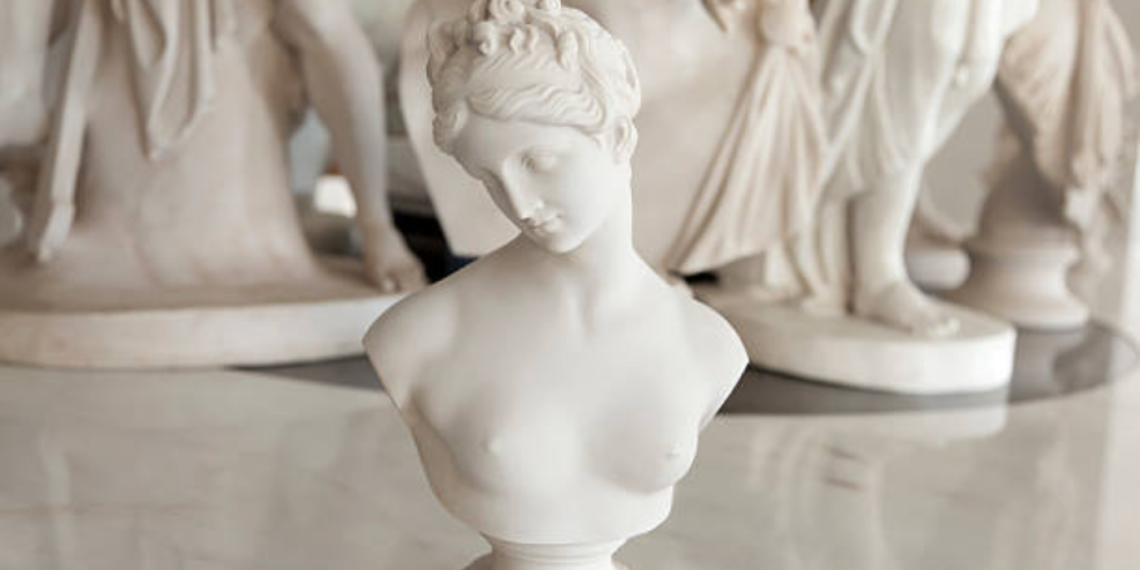Sculptures, these fascinating works of art, have the electricity to transform an regular space into an notable haven, adding a hint of beauty, grandeur, and inventive flair. However, much like any cherished possession, sculptures require right care and protection to ensure their brilliance endures for future years. Whether you very own a set of antique sculptures or have these days received a modern masterpiece, information the nuances of sculpture protection is vital to retaining their beauty and cost.
Regular Cleaning and Maintenance: A Foundation for Enduring Beauty
Just as ordinary dusting and cleansing are crucial for preserving the cleanliness and look of your private home, your sculptures demand comparable attention. Regular cleansing not only removes collected dirt and dirt but additionally prevents the accumulation of dirt, which could dull the sculpture’s floor and detract from its overall attraction by Sculptures Looking Brighter.
Dusting: A Gentle Touch
Over time, dust and dirt can acquire for your sculptures, dulling their shine and obscuring their tricky info. To fight this, ordinary dusting is important to keep the beauty and brilliance of your sculptures. However, it’s miles vital to approach dusting with care, as the usage of harsh or abrasive materials can scratch or harm the delicate surfaces of sculptures.
The best tool for dusting sculptures is a gentle, damp cloth. A microfiber material is an outstanding preference, as its gentle fibers efficiently get rid of dirt particles with out inflicting any harm. Simply dampen the cloth with water, ensuring it isn’t dripping moist, and lightly wipe down the sculpture’s surface.
For complicated sculptures with crevices or hard-to-attain regions, a smooth-bristled brush may be a beneficial accomplice to the fabric. Use the brush to cautiously dislodge dirt particles from these sensitive areas, taking care no longer to apply excessive strain that could harm and sculpture look good.
Washing: A Deeper Cleanse
While regular dusting eliminates surface-stage dirt, from time to time, your sculptures may additionally require a extra thorough cleansing. For this, you can wash your sculptures with slight cleaning soap and water. However, warning is paramount while using soap, as harsh detergents or sturdy chemical substances can irreparably damage the sculpture’s fabric.
To begin, choose a slight, non-abrasive cleaning soap specifically designed for cleansing delicate surfaces for Sculptures Looking Brighter. Avoid the use of family soaps or dishwashing beverages, as these frequently include harsh chemicals which could harm the sculpture. Gently blend the cleaning soap with lukewarm water, growing a light sudsy solution. Using a gentle sponge or cloth, carefully practice the soapy approach to the sculpture’s floor.
Avoid scrubbing or applying immoderate stress, as this will harm the sensitive end of the sculpture. Instead, lightly wipe the sculpture, being attentive to areas that could gather dust or grime. Once the sculpture is thoroughly cleaned, rinse it with smooth water to take away any soap residue. Use a easy, soft cloth to softly pat the sculpture dry, ensuring that no moisture remains trapped in crevices or grooves.
Polishing: Restoring Shine and Luster

For sculptures manufactured from metal or stone, sprucing can help repair their shine and luster, bringing lower back the vibrancy and brilliance that make these inventive creations so fascinating. However, it is essential to use the appropriate polish for the specific cloth of the sculpture.
For metal sculptures, pick out a metal polish especially formulated for the kind of steel. For instance, use a silver polish for silver sculptures, a brass polish for brass sculptures, and so on. Apply a small quantity of the polish to a smooth polishing cloth and gently buff the sculpture’s surface. Avoid the usage of excessive stress, as this may do away with the patina or protecting layer of the metal.
For stone sculptures, choose a stone polish this is appropriate for the unique stone kind. For instance, use a marble polish for marble sculptures, a granite polish for granite sculptures, and so forth. Apply the polish to a smooth material and lightly buff the sculpture’s surface. Avoid the use of immoderate stress, as this may scratch or damage the stone.
Protecting from the Elements: Shielding Your Sculptures from Nature’s Impact
While sculptures can grace both indoor and out of doors spaces, it’s far essential to keep in mind the effect of the factors on those creative treasures. Direct sunlight, rain, and excessive temperatures can all take a toll on Sculptures Looking Brighter, causing fading, erosion, and damage. By information the ability threats posed through the surroundings, you could take proactive measures to guard your sculptures and maintain their beauty.
1. Sunlight: A Silent Enemy
Prolonged publicity to direct daylight may be damaging to sculptures, inflicting fading of colours, deterioration of substances, and even cracking or warping. If feasible, position your sculptures in regions that obtain minimum direct sunlight. Alternatively, recollect the use of UV-protecting coatings especially designed for sculptures to decrease the effect of sunlight exposure.
To defend your sculptures from the dangerous consequences of daylight, remember the subsequent measures:
-
Positioning: Whenever possible, function your sculptures in areas that acquire minimum direct daylight. This can also contain rearranging fixtures, moving sculptures to less sunlit areas, or putting in blinds or curtains to protect them from harsh UV rays.
-
UV-Protective Coatings: For sculptures that can’t be protected from sunlight absolutely, recall making use of UV-shielding coatings specifically designed for Sculptures Looking Brighter. These coatings act as a barrier, absorbing or reflecting UV rays and minimizing their impact on the sculpture’s floor.
2. Rain: A Potential for Damage
Rainwater, whilst important for existence, can pose a risk to sculptures, specifically those product of metallic or stone. Rust and corrosion can expand on metallic sculptures, even as erosion can gradually put on down stone sculptures. To protect your sculptures from rainwater damage, recall bringing them indoors in the course of heavy rain or protecting them with defensive tarps or weatherproof covers for Sculptures Looking Brighter.
To safeguard your sculptures from rainwater harm, take into account enforcing these preventive measures:
-
Indoor Placement: During heavy rain or prolonged intervals of wet weather, don’t forget bringing your sculptures interior to a sheltered vicinity. This will prevent direct exposure to rainwater and decrease the danger of rust, corrosion, or erosion.
-
Protective Covers: If moving sculptures interior isn’t always possible, don’t forget using protecting tarps or weatherproof covers specially designed for out of doors sculptures. These covers will shield the sculptures from rainwater and different elements, offering a further layer of protection.
3. Extreme Temperatures: Testing Limits

Extreme temperatures, both hot and bloodless, also can purpose damage to sculptures. Intense warmness can reason materials to enlarge and contract, main to cracking or warping for Sculptures Looking Brighter. Conversely, excessive bloodless can cause substances to turn out to be brittle and vulnerable to breakage. If you live in a place with harsh climate situations, recollect bringing your sculptures interior at some point of the maximum extreme seasons to decrease the chance of damage.
To protect your sculptures from the consequences of excessive temperatures, comply with those suggestions:
-
Indoor Protection: During the harshest seasons, whilst temperatures attain intense highs or lows, don’t forget bringing your sculptures indoors to a temperature-managed surroundings. This will save you the materials from present process drastic temperature fluctuations, lowering the danger of damage.
-
Acclimatization: If sculptures should continue to be exterior at some stage in intervals of severe temperatures, permit them to acclimatize progressively to the changing situations. This slow acclimatization procedure can help reduce the strain on the materials, decreasing the likelihood of cracking, warping, or breakage.
Proper Storage and Handling: Safeguarding Your Sculptures
When no longer on show, right garage is important for safeguarding your sculptures from harm and making sure their sturdiness. By following those pointers, you can create a secure haven in your sculptures, letting them preserve their beauty and fee for years to come.
- Storage: A Haven for Your sculpture look good, dry, and well-ventilated region for storing your sculptures. Avoid storing them in damp or humid environments, as this can lead to mildew increase or rust formation. Additionally, make sure that the storage place is loose from high temperature fluctuations and direct sunlight publicity.
- Handling: A Delicate Touch When coping with your sculptures, exercising severe care to prevent scratches, dents, or other forms of harm. Wear gloves if necessary to guard your palms and the sculptures. For heavier sculptures, remember the usage of a dolly or lifting device to avoid straining your self or inflicting harm to the sculpture.
By incorporating these effective strategies into your sculpture care routine for sculpture look good, you could successfully keep the splendor and integrity of your Sculptures Looking Brighter, making sure that they keep to grace your surroundings for years yet to come. Remember, your sculptures are not just inanimate objects; they may be works of artwork that need to be loved and guarded. Treat them with the respect and care they deserve, and they’ll retain to complement your life with their creative brilliance and enduring beauty.






